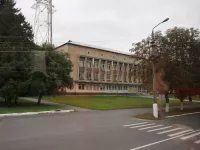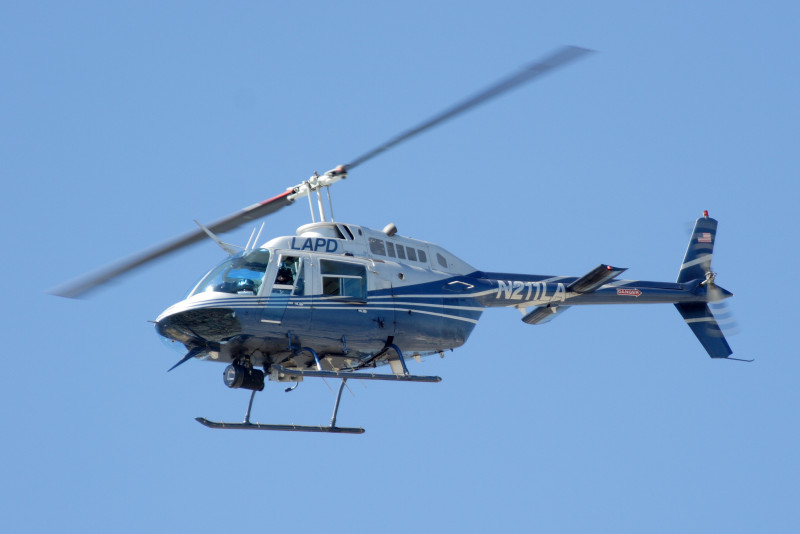A helicopter is a rotorcraft that utilizes horizontally spinning rotors to generate lift and thrust. This unique design enables vertical takeoff and landing, hovering capabilities, and maneuverability in all directions (forward, backward, and sideways). Helicopters are particularly useful in environments where traditional fixed-wing aircraft struggle, such as confined or remote locations lacking runways. Their versatile capabilities make them suitable for various applications, including transportation, search and rescue, and aerial observation.
July 1901: Maiden Flight of Hermann Ganswindt's Helicopter
In July 1901, the maiden flight of Hermann Ganswindt's helicopter took place in Berlin-Schöneberg, potentially marking the first heavier-than-air motor-driven flight carrying humans.
1901: Bahýľ's Helicopter Model
In 1901, Ján Bahýľ adapted the internal combustion engine to power his helicopter model that reached a height of 0.5 meters (1.6 feet).
May 1905: Bahýľ's Helicopter Achieves Flight
On 5 May 1905, Ján Bahýľ's helicopter reached 4 meters (13 feet) in altitude and flew for over 1,500 meters (4,900 feet).
1906: Breguet Brothers Experiment with Airfoils
In 1906, the Breguet brothers, Jacques and Louis, began experimenting with airfoils for helicopters, leading to the development of the Gyroplane No.1.
September 1907: Gyroplane No. 1 Manned Flight
Sometime between 14 August and 29 September 1907, the Breguet brothers' Gyroplane No. 1 lifted its pilot into the air about 0.6 metres (2 ft) for a minute, but was not considered a free flight due to being held steady by men at each corner.
November 1907: Cornu Helicopter's Free Flight
On 13 November 1907, Paul Cornu's helicopter lifted its inventor to 0.3 metres (1 ft) and remained aloft for 20 seconds, reported as the first truly free flight with a pilot.
1907: Four-Rotor Helicopters Pioneered
In 1907, four-rotor helicopters (quadcopters) were pioneered in France, and along with other types of multicopters, have been developed mainly for specialized applications such as commercial unmanned aerial vehicles (drones) due to the rapid expansion of drone racing and aerial photography markets in the early 21st century, as well as recently weaponized utilities such as artillery spotting, aerial bombing and suicide attacks.
1908: Edison Patents Helicopter Design
In 1908, Thomas Edison patented his own design for a helicopter powered by a gasoline engine with box kites attached to a mast by cables for a rotor, though it never flew.
1909: Berliner and Williams Helicopter Flights
In 1909, J. Newton Williams and Emile Berliner flew a helicopter "on three occasions" at Berliner's lab in Washington's Brightwood neighborhood.
1911: Slokar Patents Helicopter Configuration
In 1911, Ivan Slokar, a Slovenian philosopher and economist, patented a helicopter configuration.
1912: Ellehammer Helicopter Built
In 1912, Jacob Ellehammer built the Ellehammer helicopter, featuring two counter-rotating discs with six vanes each, and demonstrated several free take-offs.
September 1916: Ellehammer Helicopter Destroyed
In September 1916, experiments with the Ellehammer helicopter ended when it tipped over during take-off, destroying its rotors.
March 1923: Edison Congratulates de Bothezat
In March 1923, Thomas Edison congratulated George de Bothezat on a successful helicopter test flight that remained airborne for 2 minutes and 45 seconds at a height of 15 feet.
1923: Von Baumhauer Studies Rotorcraft Design
In 1923, Albert Gillis von Baumhauer, a Dutch aeronautical engineer, began studying rotorcraft design.
January 1924: Pescara's Helicopter No. 1 Tested
In January 1924, Pescara's helicopter No. 1 was tested, but was found to be underpowered and could not lift its own weight.
April 1924: Helicopter World Records Set
During April 1924, both Étienne Oehmichen and Raúl Pateras-Pescara set and broke helicopter world records recognized by the Fédération Aéronautique Internationale (FAI) for distance flown.
1924: US Army Cancels de Bothezat Helicopter Program
In 1924, the US Army cancelled the de Bothezat helicopter program, and the aircraft was scrapped.
September 1925: Von Baumhauer's Prototype 'Flies'
On 24 September 1925, Albert Gillis von Baumhauer's first rotorcraft prototype "flew" (hopped and hovered) with Captain Floris Albert van Heijst at the controls, utilizing von Baumhauer's cyclic and collective controls.
January 1927: Von Baumhauer Granted Patents for Cyclic and Collective Controls
On 31 January 1927, Albert Gillis von Baumhauer was granted patents by the British ministry of aviation for his cyclic and collective controls under patent number 265,272.
1927: Zaschka Builds Gyro-Stabilized Helicopter
In 1927, Engelbert Zaschka from Germany built a helicopter, equipped with two rotors and a gyroscope for increased stability and energy accumulation for gliding landings.
1928: Arthur M. Young Starts Work on Model Helicopters
In 1928, American inventor Arthur M. Young began working on model helicopters, using converted electric hover motors to power the rotor head. He invented the stabilizer bar shortly after.
1928: Autogyro Flies Across English Channel
In 1928, Juan de la Cierva successfully flew an autogyro across the English Channel, from London to Paris.
1928: Asbóth's Helicopter Prototype
In 1928, Oszkár Asbóth constructed a helicopter prototype that took off and landed at least 182 times, with a maximum single flight duration of 53 minutes.
1930: D'Ascanio Builds Coaxial Helicopter D'AT3
In 1930, Corradino D'Ascanio built the D'AT3, a coaxial helicopter with two counter-rotating rotors and auxiliary wings for control, setting modest FAI records for altitude, duration, and distance flown.
August 1932: Cheremukhin Sets Unofficial Altitude Record
On 14 August 1932, Alexei M. Cheremukhin reached an unofficial altitude of 605 meters with the TsAGI 1-EA helicopter, surpassing d'Ascanio's previous record, but it remained unrecognized by the FAI.
April 1933: First Free Flight of Twin Tandem Rotor Machine
In April 1933, Nicolas Florine's twin tandem rotor machine achieved its first free flight in Sint-Genesius-Rode, reaching an altitude of six meters and an endurance of eight minutes. The co-rotating configuration enhanced gyroscopic stability, making it one of the most stable helicopters of its time.
1933: Construction of the Bréguet-Dorand Gyroplane Laboratoire
In 1933, the Bréguet-Dorand Gyroplane Laboratoire, a coaxial contra-rotating helicopter, was built. Following ground tests and an accident, it would later achieve flight in 1935.
1934: Autogyro Ship Landing and Military Deployment
In 1934, the autogyro became the first rotorcraft to successfully take off and land on the deck of a ship, and was employed by the Spanish military during the Asturias revolt.
June 1935: First Flight of the Bréguet-Dorand Gyroplane Laboratoire
On 26 June 1935, the Bréguet-Dorand Gyroplane Laboratoire achieved its first flight after ground tests and an accident. Shortly after, the aircraft started setting records with pilot Maurice Claisse.
December 1935: Record for Closed-Circuit Flight
On 14 December 1935, Maurice Claisse piloted the Bréguet-Dorand Gyroplane Laboratoire to set a record for closed-circuit flight with a 500-meter diameter.
June 1936: First Flight of Focke-Wulf Fw 61
In June 1936, the transverse twin-rotor Focke-Wulf Fw 61, designed by Heinrich Focke, achieved its first flight. This marked a significant step in helicopter development.
September 1936: Height Record Set by Bréguet-Dorand Gyroplane
On 26 September 1936, Maurice Claisse set a height record of 158 meters while piloting the Bréguet-Dorand Gyroplane Laboratoire.
November 1936: Flight Duration Record
On 24 November 1936, Maurice Claisse achieved a flight duration record of one hour, two minutes, and 50 seconds over a 44-kilometer closed circuit at 44.7 kilometers per hour with the Bréguet-Dorand Gyroplane Laboratoire.
1936: First Successful Helicopter
In 1936, the Focke-Wulf Fw 61 became the first successful, practical, and fully controllable helicopter.
1937: FAI Records Set by Focke-Wulf Fw 61
From 1937 to 1939, the Focke-Wulf Fw 61 set a number of FAI records including maximum altitude of 3,427 metres.
February 1938: Demonstration of Focke-Wulf Fw 61 by Hanna Reitsch
In February 1938, Hanna Reitsch demonstrated the Focke-Wulf Fw 61 inside the Deutschlandhalle in Berlin, showcasing the capabilities of the helicopter.
1939: FAI Records Set by Focke-Wulf Fw 61
From 1937 to 1939, the Focke-Wulf Fw 61 set a number of FAI records including maximum distance of 230 kilometres and maximum speed of 124 kilometres per hour.
1939: Anton Flettner Pioneers Twin-Rotor Concept
In 1939, Anton Flettner pioneered a twin-rotor helicopter concept, which was implemented in the Fl 265 piston-engined design in Germany.
1939: Sikorsky VS-300 Development Begins
In 1939, Igor Sikorsky began developing the VS-300, which went through four iterations and became the basis for modern helicopters.
1939: Sikorsky's VS-300 Design
In 1939, Igor Sikorsky developed the VS-300, a simpler, single-rotor design, which became the first practical single lifting-rotor helicopter design. He experimented with configurations, eventually settling on a tail-mounted rotor to counteract torque.
1941: Young Joins Bell Aircraft
In 1941, Arthur M. Young joined the Bell Aircraft company after being introduced by a mutual friend to Lawrence Dale. He signed his patent over and began work on helicopters with a budget of US$250,000 to build two working helicopters.
1941: LePage Builds the XR-1
In 1941, Wynn Laurence LePage built the XR-1 helicopter after receiving the patent rights to develop helicopters patterned after the Fw 61.
1942: Mass Production of Sikorsky's R-4
In 1942, Sikorsky's R-4, developed from the VS-300, became the first large-scale mass-produced helicopter with an order for 100 aircraft. It was used during World War II for search and rescue operations.
1942: First Full-Scale Production Helicopter
In 1942, the Sikorsky R-4 became the first helicopter to reach full-scale production.
1943: Sikorsky VS-300 Evolution Completed
By 1943, Igor Sikorsky had completed the fourth iteration of the VS-300, establishing the foundation for modern helicopters with a single main rotor and tail rotor.
1943: Development of the Model 30 Helicopter
In 1943, Bell Aircraft developed the Model 30 helicopter, which used Arthur Young's two-blade teetering rotor design. The Model 30's simplicity and ease of use was apparent during this period.
1943: Destruction of the Bréguet-Dorand Gyroplane
In 1943, the Bréguet-Dorand Gyroplane Laboratoire was destroyed by an Allied airstrike at Villacoublay airport.
1945: Development of the Bell 47
In 1945, the Model 30 was developed into the Bell 47, which would later become the first helicopter certified for civilian use in the United States.
March 1946: Certification of the Bell 47
In March 1946, the Bell 47 became the first helicopter to be certified for civilian use in the United States. It went on to become the most popular helicopter model for nearly 30 years.
December 1951: Turboshaft Engine Pioneered
In December 1951, the Kaman K-225 pioneered the turboshaft engine for helicopter use, providing a large amount of power with a low weight penalty.
December 1951: Kaman K-225 Becomes First Turbine-Powered Helicopter
On 11 December 1951, the Kaman K-225 became the first turbine-powered helicopter in the world after Charles Kaman modified it with a turboshaft engine.
March 1954: First Twin-Turbine Helicopter Flight
On 26 March 1954, a modified Navy HTK-1, another Kaman helicopter, became the first twin-turbine helicopter to fly. However, the Sud Aviation Alouette II would become the first turbine-engine helicopter to be produced.
1986: Chernobyl Disaster Management Operation
In 1986, the largest single non-combat helicopter operation in history took place for disaster management following the Chernobyl nuclear disaster, involving hundreds of pilots in airdrop and observation missions.
September 2010: Design of World's First Electric Helicopter
On 10 September 2010, the conceptual computer-aided design model of the world's first man-carrying, free-flying electric helicopter was completed by Pascal Chretien.
March 2011: First Testing of Electric Helicopter
On 1 March 2011, testing of the electric helicopter began at 30% power, less than six months after the design model was completed.
August 2011: First Flight of Electric Helicopter
On 12 August 2011, the world's first man-carrying, free-flying electric helicopter achieved its first flight in Venelles, France. The development was led by Pascal Chretien.
2017: Civil Helicopter Shipments
In 2017, 926 civil helicopters were shipped for $3.68 billion, led by Airbus Helicopters with $1.87 billion for 369 rotorcraft, Leonardo Helicopters with $806 million for 102, Bell Helicopter with $696 million for 132, then Robinson Helicopter with $161 million for 305.
October 2018: Helicopter Fleet Composition
By October 2018, Robinson Helicopter led the in-service and stored helicopter fleet with 24.7%, followed by Airbus Helicopters with 24.4%, Bell with 20.5%, Leonardo with 8.4%, Russian Helicopters with 7.7%, Sikorsky Aircraft with 7.2%, and MD Helicopters with 3.4%.
Mentioned in this timeline
The United States of America is a federal republic located...
Germany officially the Federal Republic of Germany is a Western...
World War II - was a global conflict between the...
NASA the National Aeronautics and Space Administration is an independent...
France officially the French Republic is primarily located in Western...

Chernobyl is a partially abandoned city in Ukraine located within...
Trending

27 minutes ago Elle Duncan Leaves ESPN for Netflix: New Role as Sports Coverage Face
28 minutes ago Thailand Faces Severe Floods: Deaths Rise, Evacuations Underway, Drones Aid Relief.

28 minutes ago AirPods Pro on Sale: Black Friday Deals and Discounts on Apple Earbuds

28 minutes ago IAEA Conducts Safety Assessment Mission at Chernobyl Nuclear Power Plant; 50th Rotation Completed.
1 hour ago iPhone 14 Black Friday Deals: Free iPhones & Carrier Discounts Available Now

1 hour ago Anuel AA sparks concern with recent controversies, concert issues, and changed appearance.
Popular
Aftyn Alyssa Behn is an American politician currently serving as...

William Franklin Graham III commonly known as Franklin Graham is...

Candace Owens is an American conservative political commentator and author...

XXXTentacion born Jahseh Dwayne Ricardo Onfroy was a controversial yet...

Marjorie Taylor Greene known as MTG is a U S...

Maxine Waters is an American politician who has served as...
